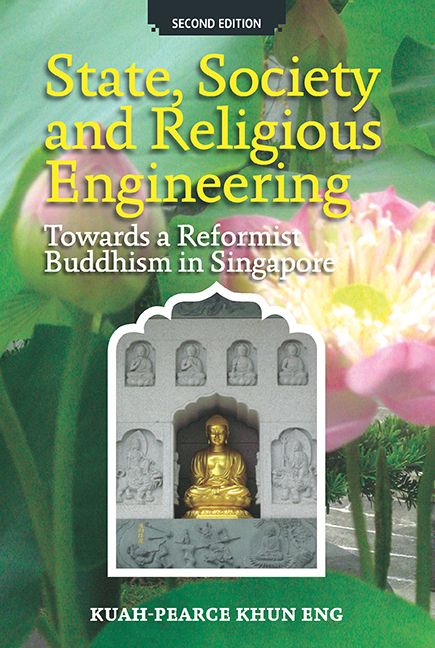Book contents
- Frontmatter
- Contents
- List of Diagrams
- Note on Romanisation
- Preface to the Second Edition
- Acknowledgements to the Second Edition
- Introduction
- PART 1 INVENTING A RELIGIOUS TRADITION
- 1 Reinventing Chinese Syncretic Religion: Shenism
- 2 Communicating with Gods, Deities and Spirits
- PART 2 STATE, SOCIETY AND RELIGIOUS ENGINEERING
- PART 3 TOWARDS A REFORMIST BUDDHISM
- Conclusion
- Postscript to the Second Edition: Towards a Humanist and Socially-engaged Buddhism
- Glossary
- Bibliography
- Index
2 - Communicating with Gods, Deities and Spirits
from PART 1 - INVENTING A RELIGIOUS TRADITION
Published online by Cambridge University Press: 21 October 2015
- Frontmatter
- Contents
- List of Diagrams
- Note on Romanisation
- Preface to the Second Edition
- Acknowledgements to the Second Edition
- Introduction
- PART 1 INVENTING A RELIGIOUS TRADITION
- 1 Reinventing Chinese Syncretic Religion: Shenism
- 2 Communicating with Gods, Deities and Spirits
- PART 2 STATE, SOCIETY AND RELIGIOUS ENGINEERING
- PART 3 TOWARDS A REFORMIST BUDDHISM
- Conclusion
- Postscript to the Second Edition: Towards a Humanist and Socially-engaged Buddhism
- Glossary
- Bibliography
- Index
Summary
INTRODUCTION
Chinese Shenism consists of a system of elaborate rituals and practices that are conducted by the individuals, groups of individuals and religious specialists within the domestic households and in the temple. These rituals serve as a system of communication and negotiation with the gods and deities where the inter-personal communication between individuals and deities take place on both a routine basis and on special occasions. Religious specialists such as the Buddhist monks, Daoist priests and spirit-mediums are sometimes asked to intervene in the negotiation process. This chapter explores these various aspects of ritualism and the extent to which this system of communication and negotiation takes place between the individuals, religious specialists and the gods and deities.
COMMUNICATING WITH GODS AND DEITIES
(a) Domestic Worship
Among the older generation Chinese, the worship of deities is considered an important manifestation of religiosity. Images of the deities can be made from wood, metal or marble, or printed on paper (as posters) and encased in photo frames, or represented by written Chinese characters on paper or cloth and framed or pasted on the wall for worshipping. While wealthy worshippers have specially-made altar tables to house the elaborate forms, often sculptured out of marble, the majority have simple forms of representation. To them, it is the piety of the individual worshipper that is the most significant. It is therefore not surprising to find that today, in most Chinese homes, there continues to be a family shrine, in the form of an altar table devoted to one or more deities and to the family's ancestors.
The most common form of communication with the deities is to talk to them in the form of silent prayer, known as “praying to god” (bai-shen), either at home or in the temple. At home, communication with these deities and ancestors takes place through a simple offering of incense – usually twice a day, once in the morning and once in the evening. This is also a reflection of an individual religiosity to the deities and ancestors. Other forms of expressing one's religiosity include chanting a Buddhist mantra, the common one being the Amitabha mantra, Namo-O-Mi-To-Fo. This form of communication and offering lasts only a few minutes. Sometimes, a person might recite the name of Amitabha Buddha during his or her leisure time with the help of a prayer beads.
- Type
- Chapter
- Information
- State, Society and Religious EngineeringTowards a Reformist Buddhism in Singapore (Second Edition), pp. 56 - 88Publisher: ISEAS–Yusof Ishak InstitutePrint publication year: 2009

